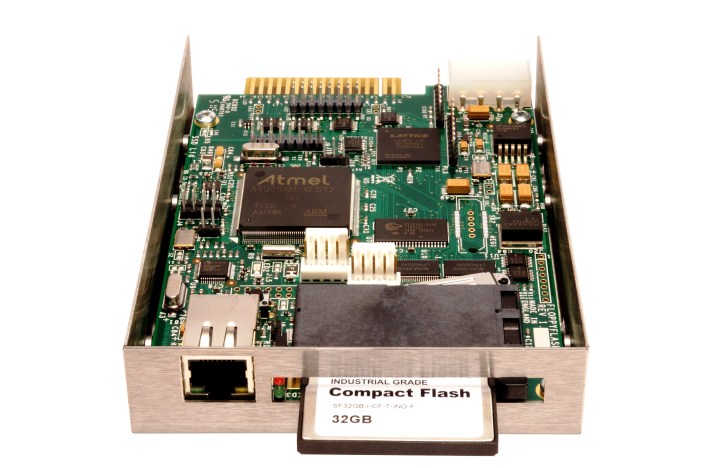
The drive is easy to install because it’s built to fit in your computer’s pre-existing 3.5-inch drive port. You don’t even need to replace the cable: the FloppyFlash only needs a standard 34-pin floppy disk drive connection to work.
Data rates are adjustable between 125 and 500 Kbit per second, which should keep your computer thinking it still has a floppy drive installed. The Compact Flash cards used by the drive are removable, and the drive has an included USB port to allow for easy firmware upgrades.
While most of us consumers will likely not have much of a use for this drive (other than those who appreciate it for its novelty), Solid State Disks itself does see a much bigger use in the commercial sector, where upgrade cycles are often much, much slower.
“There are plenty of critical legacy systems in a variety of industries that are potentially nearing end-of-life simply as they age or fail,” the company’s sales director James Hilken says. Hilken adds that the company is targeting these potential buyers with a solution that at least in the near term gives those older computers a few more years of usable life.
The floppy drive supports Compact Flash up to 64GB, and can even be controlled through the network thanks to built-in networking capabilities. This is done through companion software, which the company says contains “multiple login levels” to prevent unauthorized access and tampering.
As of press time, pricing on the FloppyFlash was not immediately available. Those interested will at least for now have to contact the company directly. But for those of you longing for the past days when floppy disks were the way we made our data portable, there’s at least a solution out there now.
Editors' Recommendations
- What is an RSS feed? Here’s why you should still use one
- Here’s how to use Sidecar in MacOS Catalina to make your iPad a second screen


